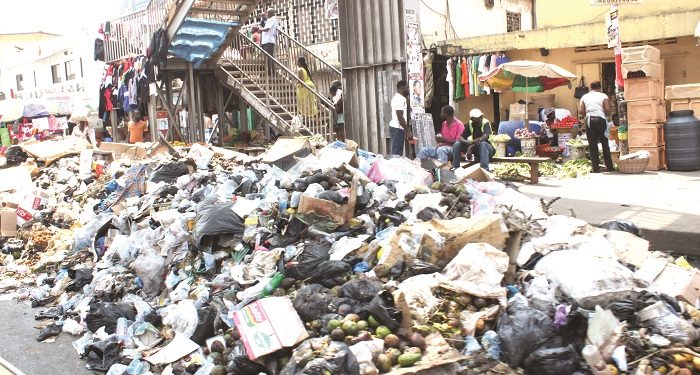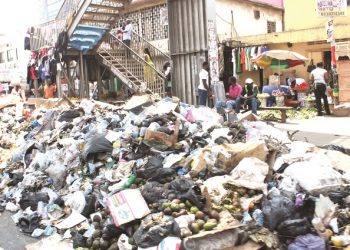This is the culmination of the pragmatic mechanism to perpetually eradicate filth. From the beginning of the process, individuals and institutions instantly put waste materials into waste bins/bags. Waste collectors empty waste bins/bags in due time and carry waste materials to transfer sites. Waste materials are sorted out, arranged and/or treated to be carried further to appropriate destinations – which climaxes the waste disposal chain.
Every waste material generated at the beginning must cease to exist at this final point. Interestingly, most of the waste materials serve as raw materials for the manufacture of other useful products. Hence, those useful waste materials will be hauled to recycling sites or green waste processing sites. On the other hand, useless waste materials are carried to incineration sites or landfill sites. Now, let’s highlight the various sites:
- Recycling Sites
Simply put, recycling is anything that involves recovering and reusing materials or products that are considered rubbish and thrown away. Only certain materials or products can be recycled. Materials like glass, paper, plastic and metal are the main recyclables. Also, some recycling centers will take organics like banana peels, lawn chippings, leaves and chicken bones.
Primary recycling (secondhand use) means the recyclable material or product is recovered and reused without being changed in any way and usually for the very same purpose. Secondary recycling means that the material or product is reused in some other way without reprocessing. Tertiary recycling refers to the process that involves the chemical altering of the material or product in order to make it reusable.
In fact, both primary recycling and secondary recycling can occur at households and all other places of public gatherings by individuals and institutions. For instance, someone can decide to reuse old clothes himself, donate to a friend/family member/charity organization or sell.
Moreover, someone can decide to cut the upper half of a plastic bottle to use it as a plant pot, cut and reshape various waste products to make arts and crafts, cut envelopes into smaller pieces to use them as scrap paper, and etcetera. At the transfer sites too, reusable materials that have been properly sorted out can be sent back to be used by individuals and institutions.
Happily enough, there are a number of recycling firms or companies that process all forms of recyclables into other useful products. For example, plastic wastes can be processed to manufacture handbags, chairs, pavement blocks, and fuel.
Again, some metals can be recycled into tractor-trailers and car bodies. Also, recycled papers can produce toilet rolls, tissues, greeting cards and cardboards.
Furthermore, green waste can be used to improve the quality and sustainability of the soil. The screened compost from recycled green waste can be used as a soil amendment in flowerbeds, gardens, and agricultural land. It serves to add nutrients to the soil and helps water retention.
- Incineration Sites
Burning is a very effective method of reducing the volume and weight or completely getting rid of non-recyclable solid waste. In modern incinerators, the waste is burned inside a properly designed furnace under very carefully controlled conditions. Furnaces are constructed of contumacious bricks or blocks that have the capability to withstand the high combustion temperatures.
Two weeks ago, I was engaging in waste disposal chain discourse with a loved one, Awurabena Fobi. She made a brilliant contribution in a form of a question and I quote, “Harry, don’t you think if incinerators are set up in every community to burn solid wastes, the situation of filth will reduce drastically?”
She said that because she’d realized some people are fond of burning solid wastes but then, they lack the knowledge and resources to thoroughly incinerate the waste materials. They mostly end up causing filth from unburned wastes. Also, the smoke that emits from such acts might be injurious to human health and safety.
Therefore, in her candid opinion, at least one incinerator must be set up in every community or municipality to properly and utterly burn solid wastes that cannot be recycled. Apart from the fact that individuals and institutions will desist from burning waste materials by themselves, unnecessary pressure on landfill sites will be reduced.
As I pondered over her views, I couldn’t agree more. It will be congenial to set up at least simple incinerators at communities or certain institutions after making the feasibility and environmental impact assessment. Scientists, engineers and architects can team up to construct normal pits or furnaces for such intended purposes.
As a matter of fact, the benefits derived from incineration and the health risk from pollutants emitted during combustion eerily juxtapose against each other. That notwithstanding, there are alternative ways to burn waste materials without emitting smoke and other harmful substances.
- Landfill Sites
All non-recyclable solid waste materials that are aren’t incinerated are carried to landfills to be completely buried. The burial is done between layers of earth to build up low-lying land. Thus, the burial of waste can be done systematically with daily, intermediate and final covers.
Operators of well-run landfills meet predefined specifications by applying techniques to confine waste to as small an area as possible and compact waste to reduce volume. Afterward, they cover the waste, on a daily basis, with layers of soil or other types of material such as woodchips and fine particles.
Furthermore, there can be a sanitary landfill that serves as an engineered facility to separate and confine waste. Such a landfill is intended as a biological reactor in which microbes will break down complex organic waste into simpler, less toxic compounds over time. Environmental engineering must be considered in designing the reactor.
Apparently, landfill sites shouldn’t be allowed to reach maximum points lest the waste disposal chain will be greatly affected. Waste collectors might be compelled to dump waste indiscriminately or at any unauthorized place.
Also, there could be delays in emptying waste bins at various collection sites. Consequently, temporary waste storage units will be overloaded and filth will be caused. So what’s the essence of going through the other mechanisms in the waste disposal chain successfully only for landfill sites to ruin everything?
In conclusion, all the parts – one (originator of waste & temporary waste storage units), two (waste collectors & waste transfer sites) and final (recycling sites, incineration sites & landfill sites) – of the waste disposal chain must be operated systematically. Existing filth must also be cleaned completely to pass through the mechanism.
I, therefore, wish to issue a clarion call for the use of a waste disposal chain to eradicate filth. There’s the need to put pragmatic measures in place to make the mechanism effective. The author will emphasize those measures in the subsequent articles.
About The Author
Harry Sarfo Diko, popularly known as Jamigy Harry, is the sole proprietor of Idealoyal Enterprise – a registered business (with GhaClean as one of its objects of business). He holds a Bachelor of Commerce (Accounting & Finance) Degree from the University of Cape. He’s much enthusiastic about Entrepreneurship and solving societal problems.











































